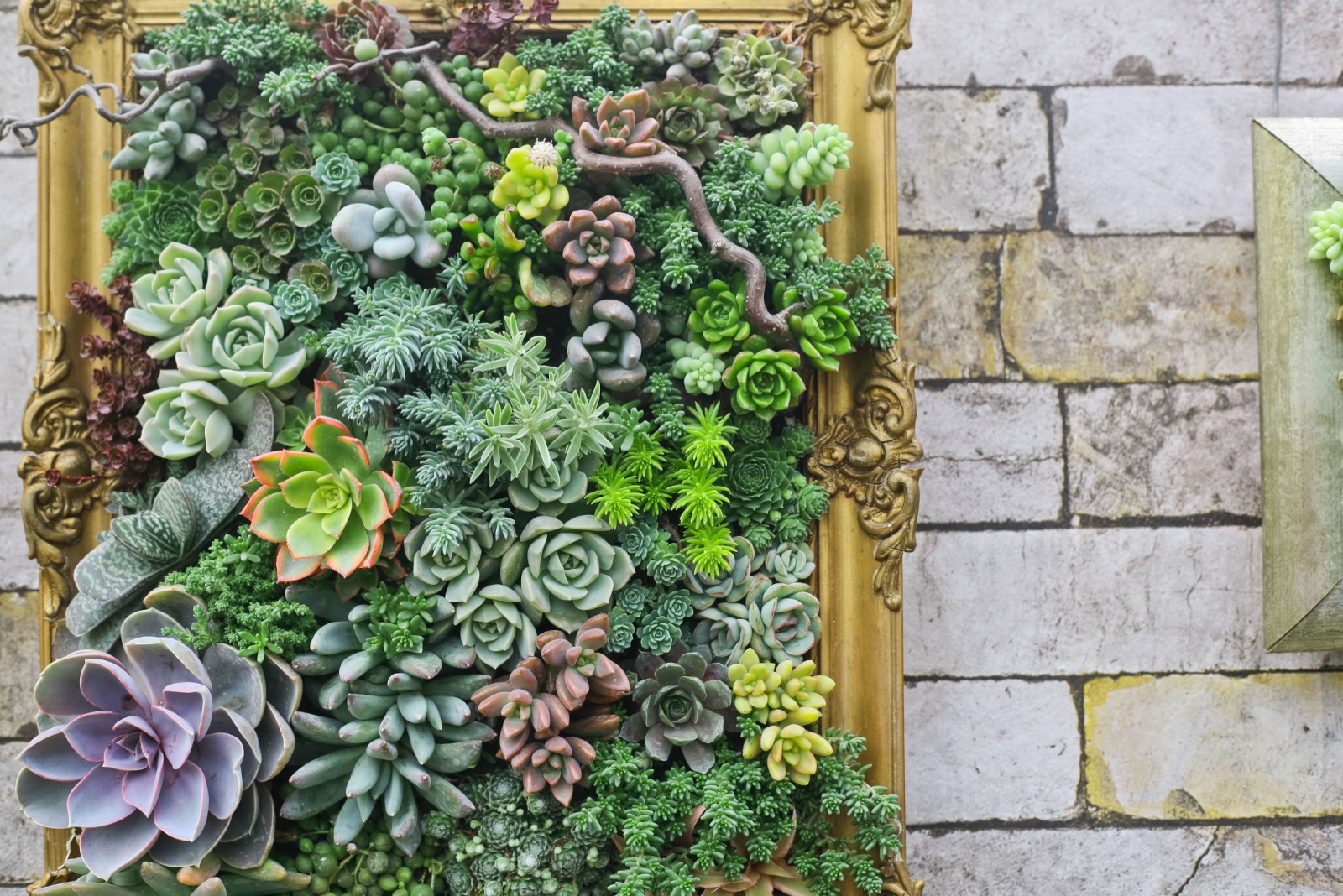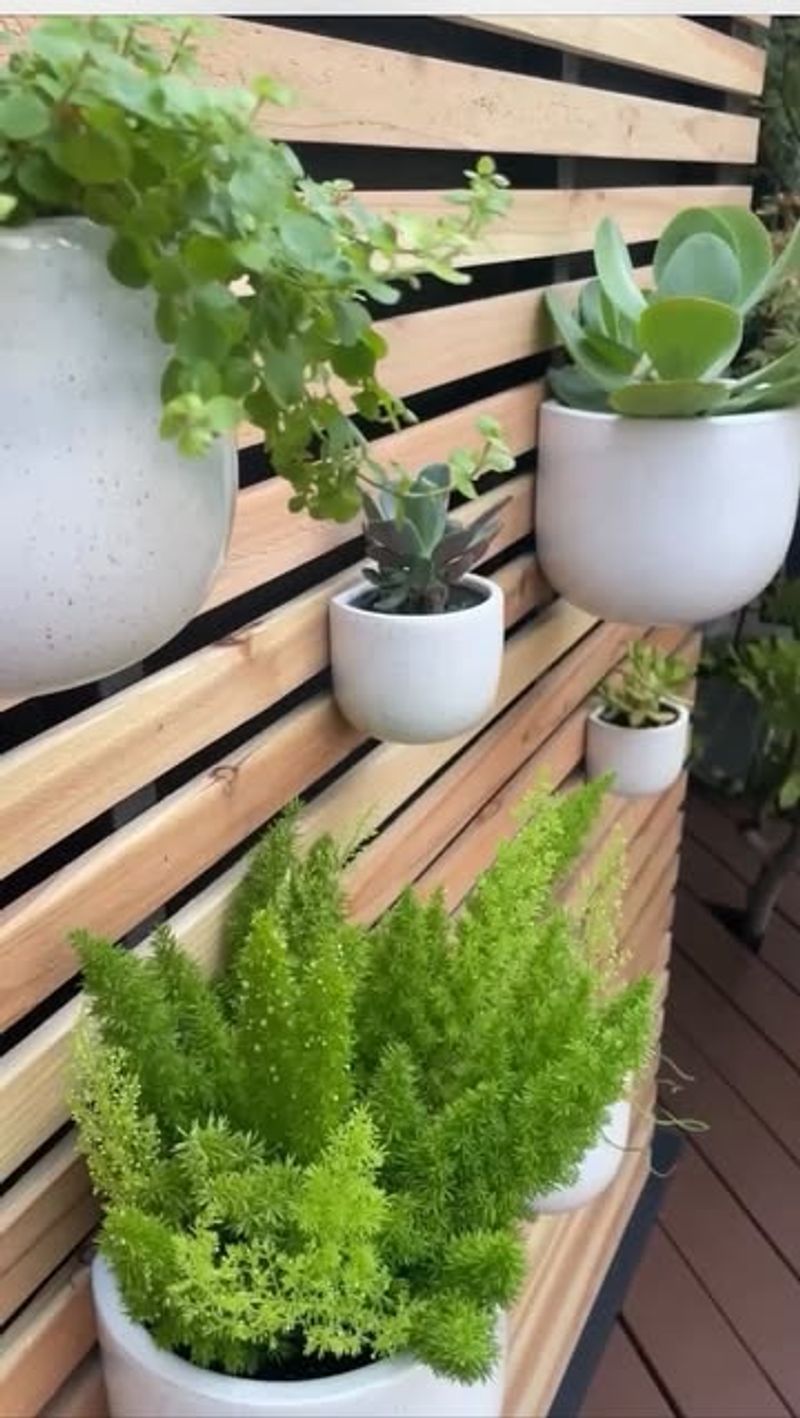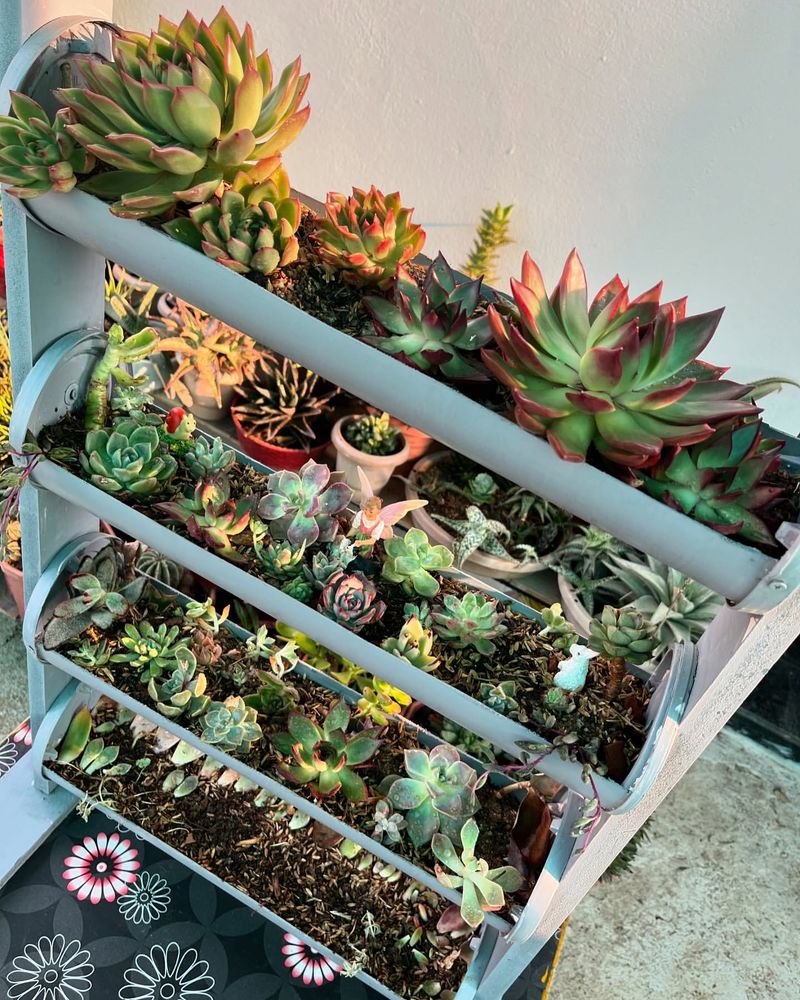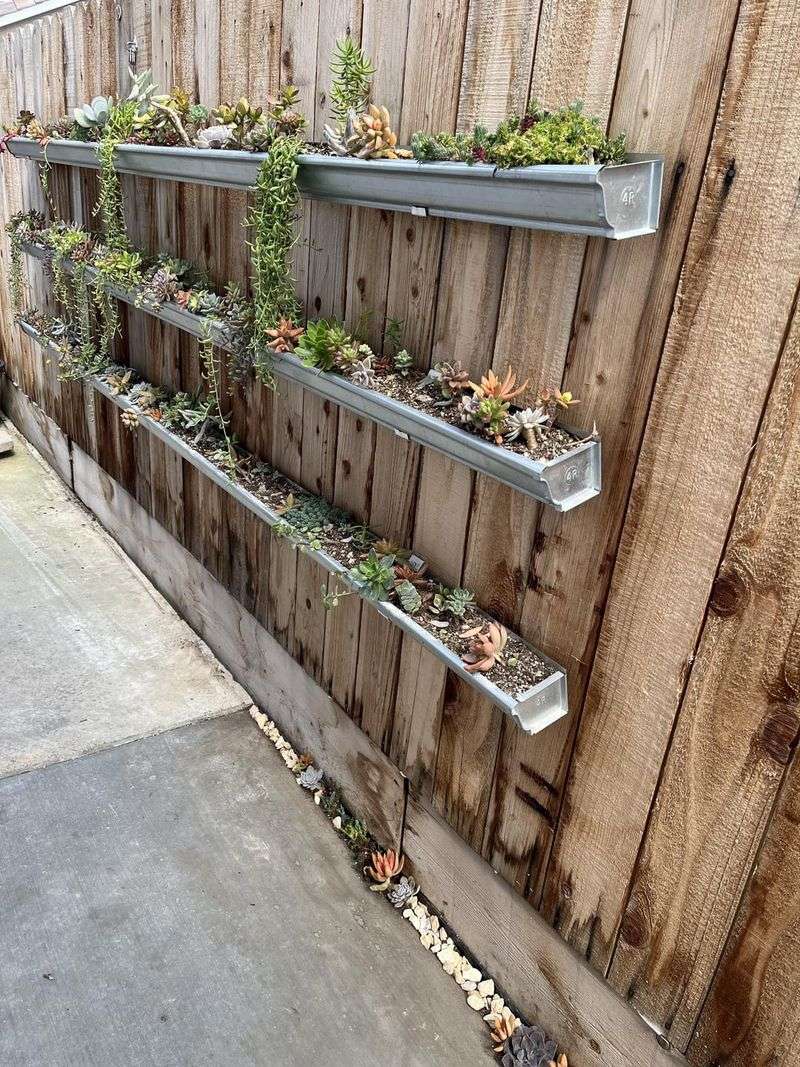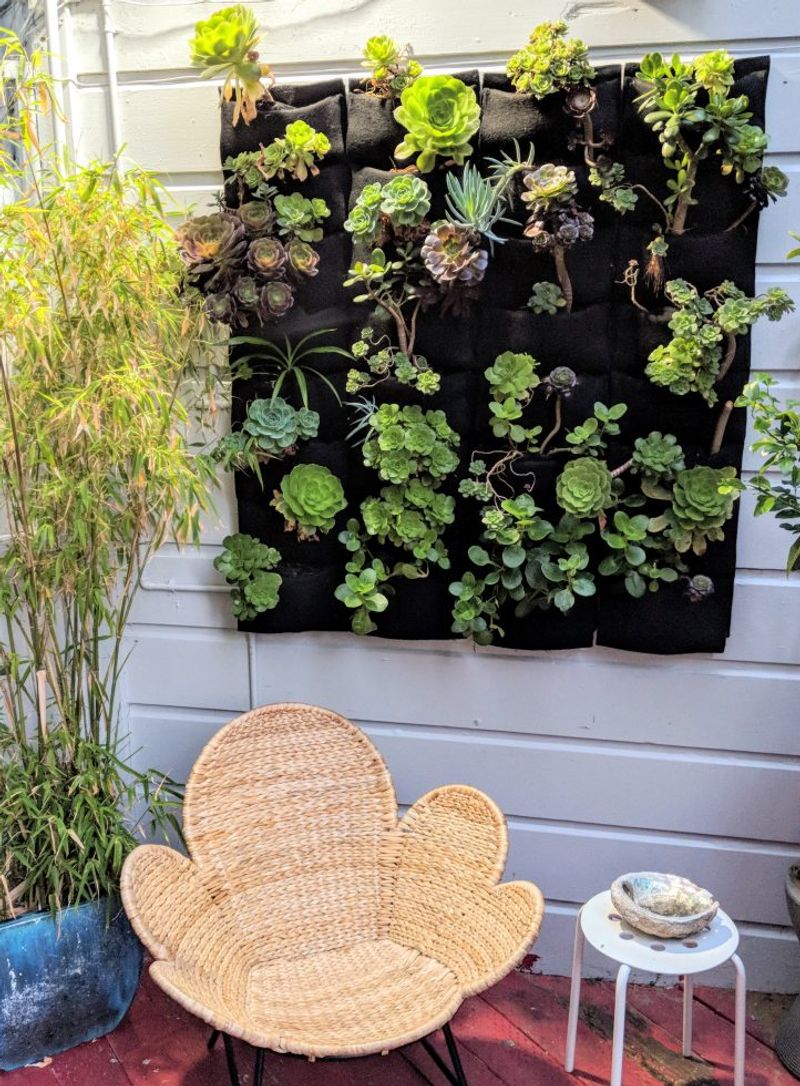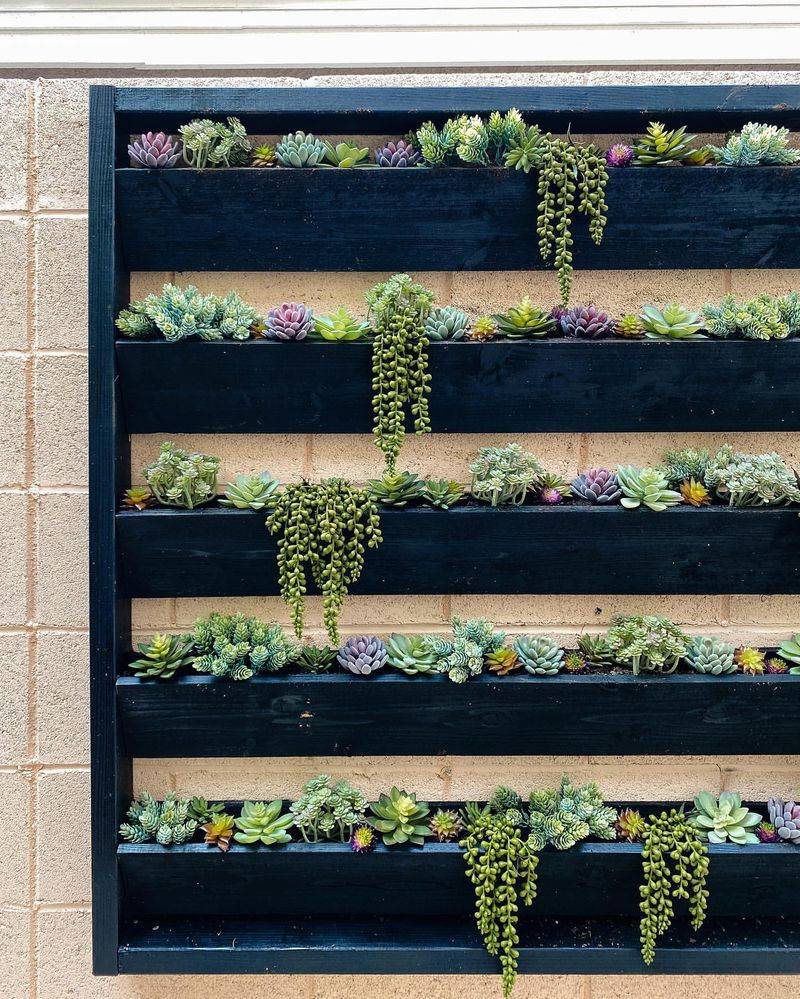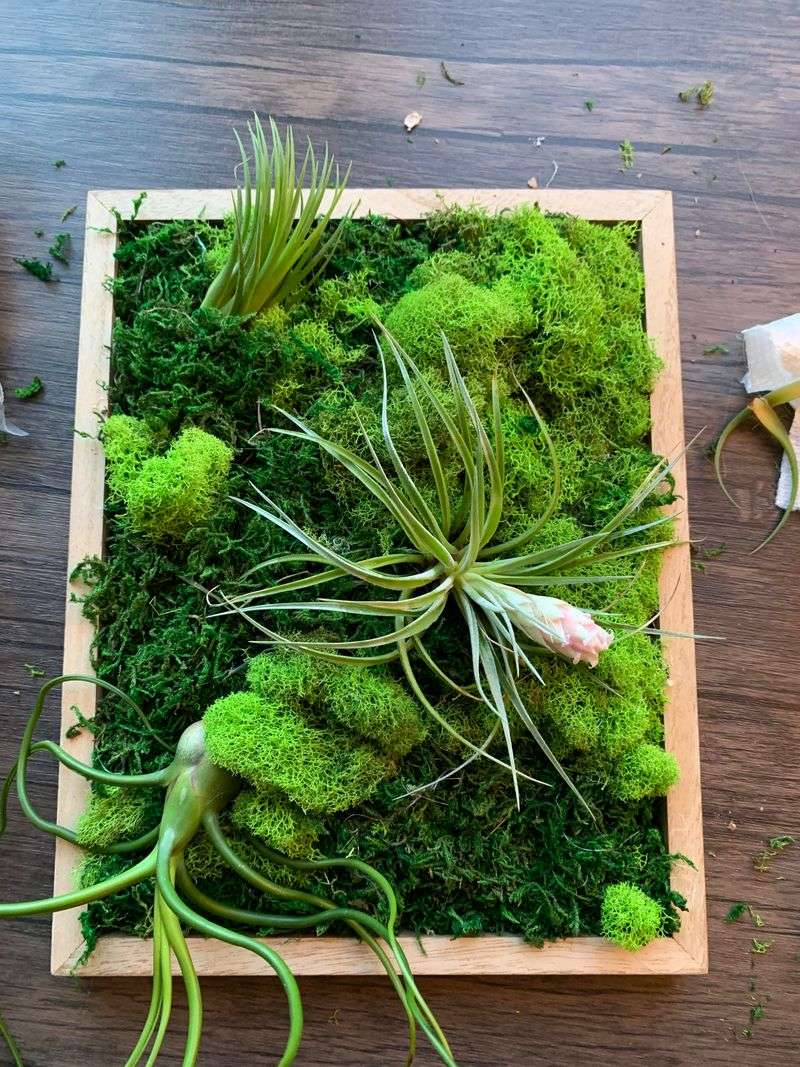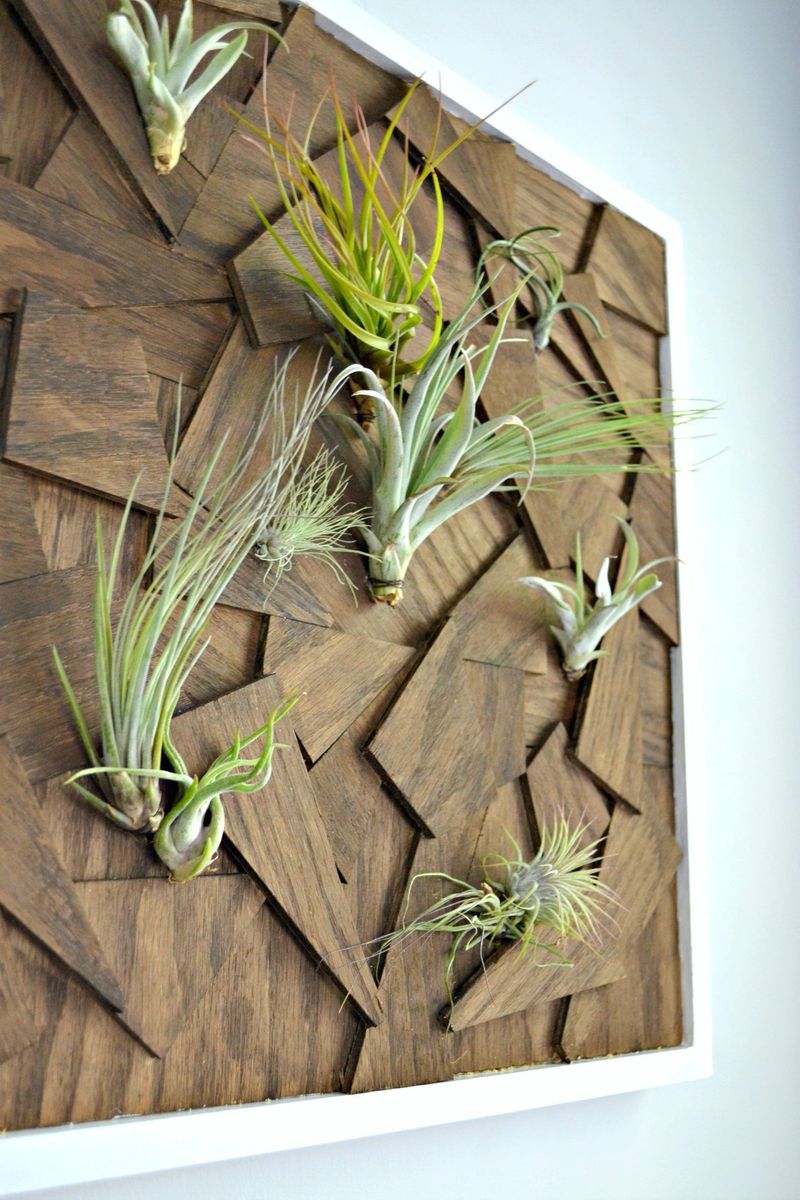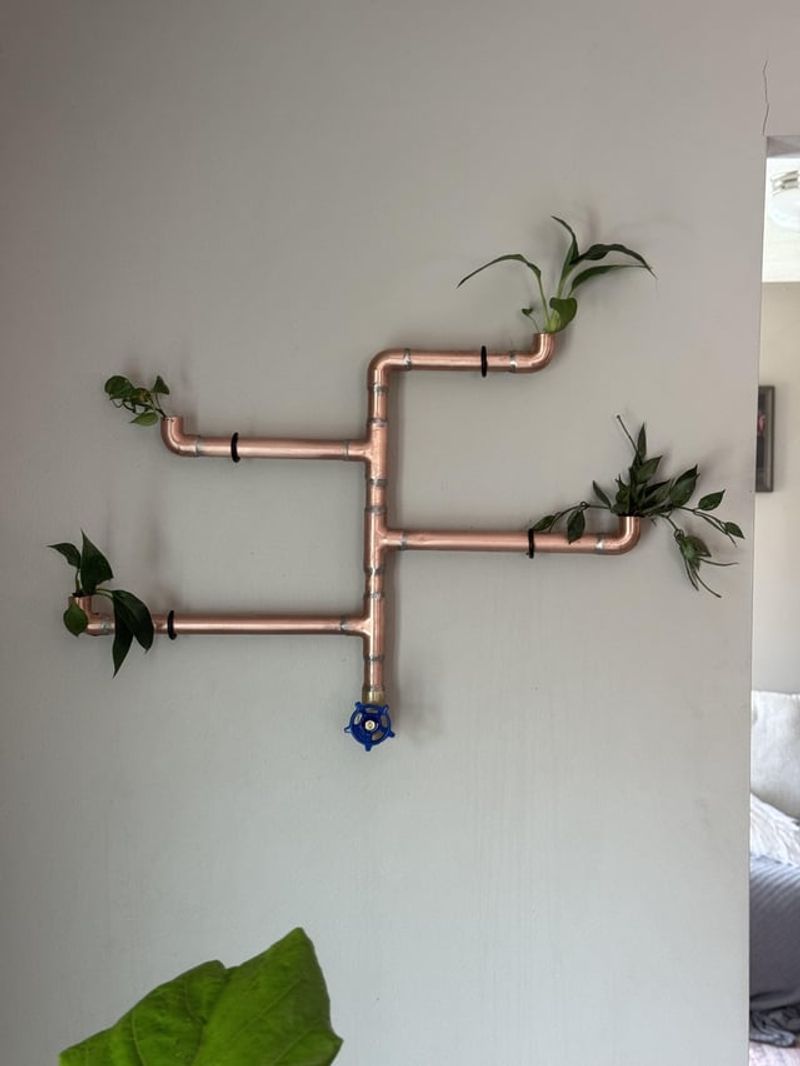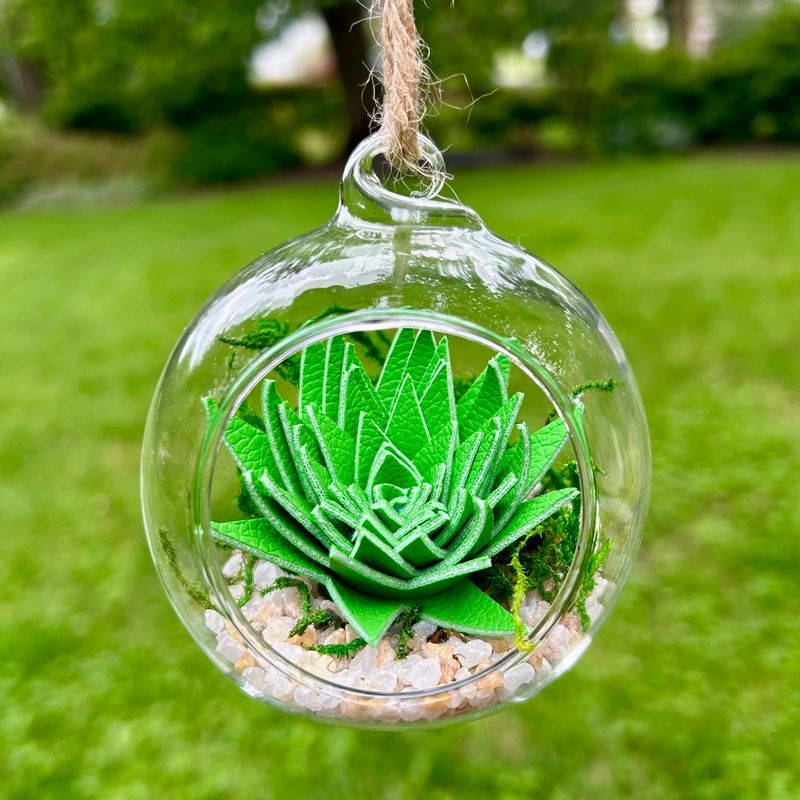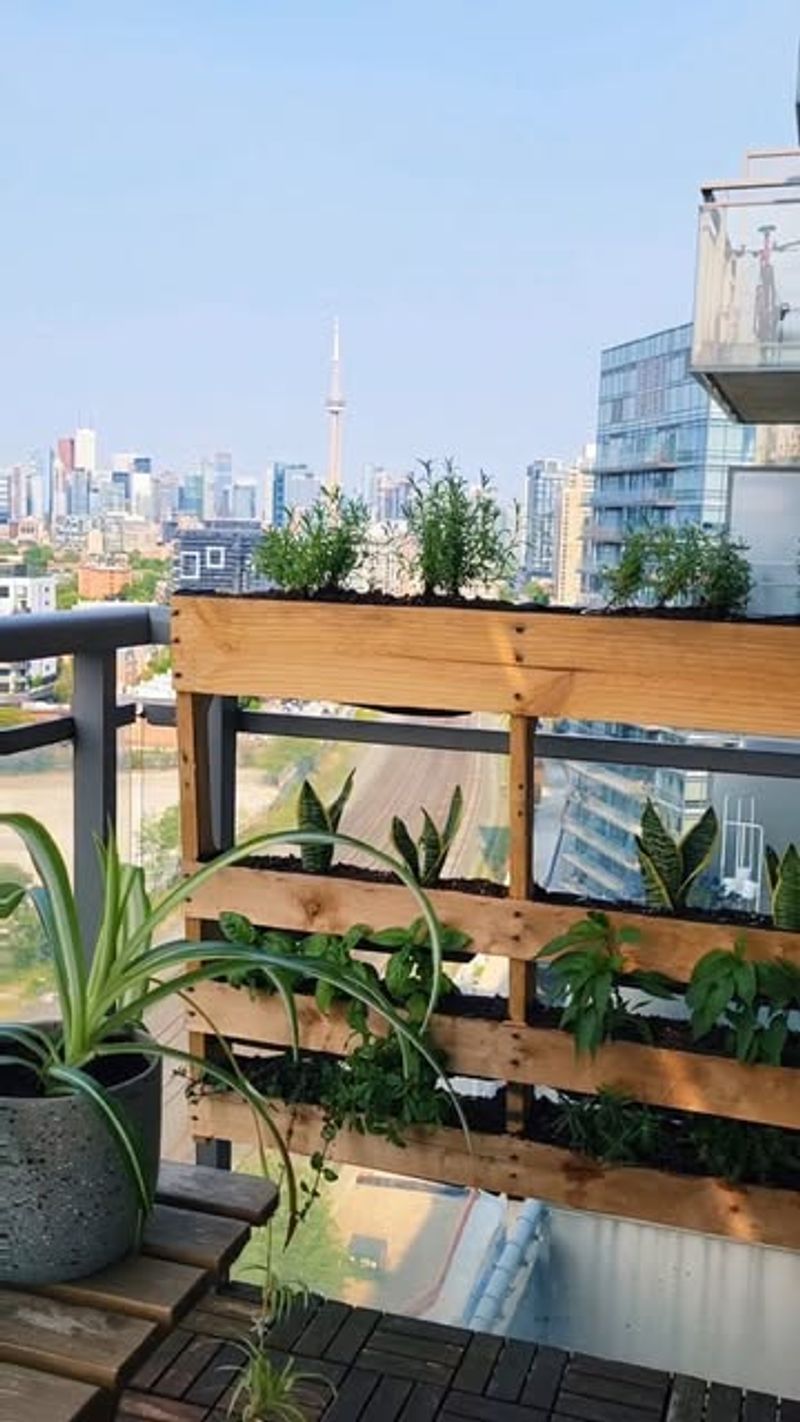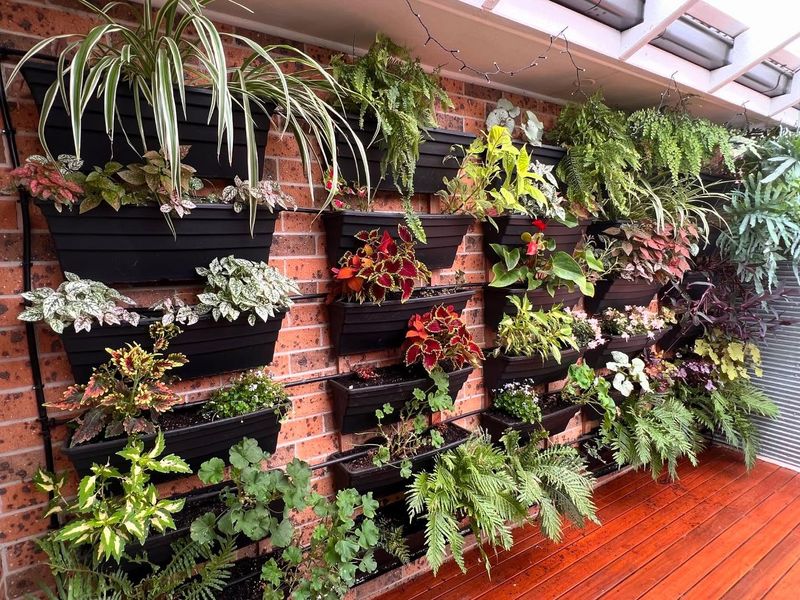Orlando’s high humidity can be tricky for succulent lovers. These drought-tolerant plants typically prefer drier conditions, but that doesn’t mean we have to give up on creating beautiful living walls with them.
With some smart design choices and proper plant selection, vertical succulent gardens can actually thrive in our Central Florida climate. The key is creating systems with excellent drainage and airflow while choosing varieties that can handle occasional moisture.
I’ve gathered some practical ideas that work specifically for our region’s challenges. Each approach offers a way to enjoy these fascinating plants while managing our unique growing conditions.
1. Slatted Cedar Frame Systems
Cedar naturally resists moisture damage, making it perfect for Orlando’s humid environment. The slatted design allows air to circulate behind your succulent display, preventing dampness from building up against your wall.
Mount the frame slightly away from the wall surface to create an air gap. This simple technique dramatically improves ventilation and helps succulents dry out between waterings.
Use stainless steel hardware for all connections since regular screws will rust quickly in our climate. The cedar will gradually weather to a beautiful silver-gray that complements the green tones of your plants.
2. Terracotta Pocket Planters
Terracotta’s porous nature pulls excess moisture away from plant roots, creating a naturally drier microclimate. Hang multiple pocket-style planters in a grid pattern for a striking wall feature that helps succulents stay happy despite Orlando’s humidity.
Look for planters with drainage holes at the bottom and small feet that create space between the container and the wall. This gap prevents moisture from being trapped and causing damage.
Consider placing these in partially covered areas like porches where they’ll receive bright light but some protection from daily summer downpours.
3. PVC Pipe Vertical Gardens
PVC pipe sections mounted horizontally create perfect little homes for succulents while managing moisture beautifully. Cut 4-inch diameter pipes into 6-8 inch sections, drill drainage holes, and mount them securely to a frame.
Fill each pipe section with fast-draining cactus soil mixed with extra perlite. This soil composition helps excess water escape quickly, preventing root rot issues common in humid environments.
The smooth interior of PVC doesn’t harbor mold or mildew, making maintenance easier. Paint the pipes with exterior paint for a customized look that complements your outdoor space.
4. Hanging Gutter Garden
Repurposed rain gutters make surprisingly effective succulent planters. Mount several lengths horizontally across your fence or wall, making sure to drill plenty of drainage holes along the bottom.
The long, narrow shape allows you to create beautiful ribbons of color and texture. Add small rocks at the drainage holes to prevent soil from washing out while maintaining good water flow.
Choose gutters made from vinyl rather than metal for this project. Metal heats up dramatically in Orlando’s sun, potentially cooking your plants, while vinyl stays cooler and won’t corrode.
5. Mesh Pocket Wall System
Fabric pocket systems designed specifically for vertical gardening offer excellent drainage in humid conditions. The breathable material allows air to reach the roots from all sides, helping prevent the soggy conditions succulents hate.
Mount the fabric system under a slight overhang where plants receive bright light but some protection from direct rainfall. This setup gives you control over exactly how much water your plants receive.
Look for UV-resistant materials that won’t break down in Florida’s intense sunshine. The flexibility of these systems lets you easily swap plants around as needed.
6. Cinder Block Vertical Garden
Stacked cinder blocks create natural planting pockets perfect for succulents. The concrete material doesn’t rot or degrade in humidity and provides excellent drainage through its porous structure.
Arrange blocks in a stepped pattern against a sunny wall. Fill each cavity with fast-draining cactus mix, and consider adding small pebbles at the bottom for extra drainage.
Paint the blocks with masonry paint for a more finished look, or leave them natural for an industrial vibe. The thermal mass of concrete also helps moderate temperature swings that stress plants.
7. Framed Succulent Art With Built-in Fans
Take vertical gardening high-tech with a framed living picture that includes small computer fans for air circulation. The fans create constant airflow that helps succulents dry quickly after Orlando’s frequent rain showers.
Build a deep shadow-box style frame with a mesh front that allows air movement. Install small, quiet 12V fans that run on a timer, creating gentle breezes through your living art several times daily.
Solar-powered options work well for outdoor installations, eliminating the need for electrical connections. The extra ventilation makes this system particularly suitable for sensitive succulent varieties that normally struggle in humidity.
8. Tillandsia And Succulent Combination Walls
Air plants (Tillandsia) naturally thrive in Florida’s humidity, making them perfect companions for hardy succulents in vertical gardens. Create a mixed wall where air plants occupy the more humid lower sections while succulents fill the upper, drier areas.
Mount air plants on driftwood or cork bark attached to your vertical frame. Their ability to absorb moisture from the air means they’ll actually benefit from conditions that challenge many succulents.
This combination approach lets you enjoy a fuller, more diverse living wall while working with Orlando’s climate rather than fighting it.
9. Copper Pipe Mini-Planters
Copper doesn’t just look stunning against green succulents—it naturally inhibits fungal growth, a significant benefit in humid environments. Create a wall feature using copper pipe sections as individual planters for small succulents.
Cut 2-inch diameter copper pipe into 3-inch sections, cap one end, and drill drainage holes. Mount them to a wooden backboard in an artistic pattern, creating a metallic mosaic that catches the light.
The copper will develop a beautiful patina over time that adds character. This approach works particularly well for smaller, slow-growing succulent varieties that won’t quickly outgrow their copper homes.
10. Hanging Glass Terrariums With Pebble Base
Glass terrariums filled with layers of pebbles create perfect microenvironments for humidity-tolerant succulents. The pebble base provides excellent drainage while adding visual interest to your vertical display.
Hang multiple glass containers at different heights using sturdy marine-grade rope that withstands Florida’s weather. Position them where they receive bright, filtered light rather than direct sun that could create greenhouse effects inside the glass.
Choose open-sided terrarium designs rather than fully enclosed ones. The airflow prevents condensation buildup while still showcasing your plants in an elegant, floating display.
11. Repurposed Pallet Garden With Shade Cloth
Wooden pallets make excellent vertical gardens when modified with shade cloth backing. The fabric creates pockets for plants while allowing excess water to drain freely, preventing the soggy conditions that lead to root rot.
Mount your pallet slightly away from the wall and add a 30% shade cloth across the back. This setup provides both drainage and a slight reduction in light intensity during Orlando’s harshest summer sun.
Fill the pockets with a mixture of cactus soil and orchid bark for excellent drainage. The elevated planting spaces also improve air circulation around your succulents.
12. Covered Porch Succulent Wall
Creating a vertical garden in a covered outdoor area gives you the perfect middle ground for succulents in Orlando. The roof provides protection from daily rainfall while still allowing bright, indirect light to reach your plants.
Install a frame system on your porch wall with removable planting trays. This modular approach lets you bring sensitive varieties indoors during periods of extreme humidity or heavy storms.
Add a small oscillating fan nearby that runs for a few hours daily. The gentle air movement mimics the desert breezes these plants evolved with and helps prevent fungal issues.

